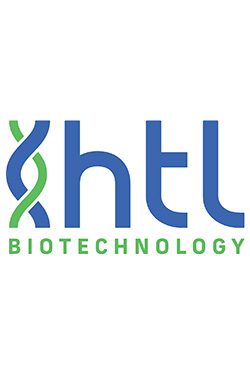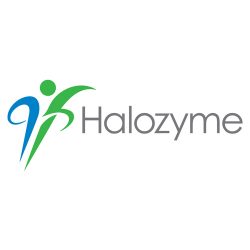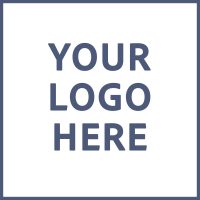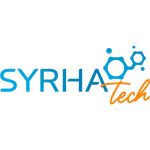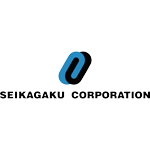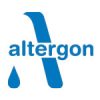HA2025
ABSTRACTS
ORAL & POSTER PRESENTATIONS
for the 15th International Conference on Hyaluronan
Online registration and abstract submission is open as of December 1, 2024.
Abstracts must be submitted by March 14, 2025.
INSTRUCTIONS FOR PRESENTERS
We look forward to your research presentations at the upcoming HA 2025 meeting at the Q-Center in St. Charles.
We will send out an email regarding the selection of Poster and Short Talk presentations of your submitted abstracts on April 15, 2025. If you have not received a notification by April 17th, please reach out to us at abstracts@ishas.org.
ORAL PRESENTATIONS:
- Keynote Speakers: Presenters should prepare a 35-minute podium presentation
- Invited Session Speakers: Presenters should prepare a 20-minute podium presentation
- Short Talks (selected from abstracts): Presenters should prepare a 10-minute podium presentation. (Presenters of short talks may wish to prepare a poster focusing on a summary of their results. Please email abstracts@ishas.org if you are bringing a poster- see instructions for posters below.)
All oral presentations will be followed by a 5 min Discussion
Presenters need to prepare their PowerPoint presentations in wide format (16:9 aspect ratio). And labeled with your Session # and last name (for example, Session_1_Smith).
You will need a Box account to upload the PowerPoint file and completed no later than 48 business hours before your presentation using this link 0608ISH001.ISHAS.Conference 2025.060725
For issues with uploading the file please reach out to Jeremiah Mitchell (jeremiah.mitchell@qcenter.com).
POSTER PRESENTATIONS:
POSTER DIMENSIONS have to be MAX 30 inch (76 cm) wide and 50 inch (127 cm) high to fit the poster board spaces. Pins for the posters will be provided at the QCenter.
THREE AVAILABLE PRINTING OPTIONS:
– FOR PICKUP AT HA2025 REGISTRATION DESK:
You can submit your PowerPoint file to the following local Printing stores and then collect the poster at the HA2025 Registration Desk. Please ensure that your submission is labeled for the ISHAS meeting and email abstracts@ishas.org, including your name and the location listed below, where your poster is being printed.
- The Printing Store (Oak Park) $60.00/poster; theprintingstore.com
- Minuteman Press (Oak Park)- $72.00/poster; minuteman.com/us/locations/il/oak-park
– FOR PICKUP AT THE QCENTER:
QCreative at the QCenter (St. Charles) $75.00/poster; Please download the form from this link, complete it, and submit to Jeremiah.Mitchell@qcenter.com requesting service for HA 2025. Upload your poster as a PowerPoint file to the following Box folder: https://qcreative.box.com/s/
iuoman9w1sj0gviyqhfdhog8ry6mlr 8d at least two weeks before the conference starts. To help us stay organized, we ask that everyone create their own individual folder within Box and name it using the following format: [NumberofPosters].[ YourInitials].[TodaysDate] (For example: 3.JD.051225).
FLASH PRESENTATION:
Each poster presenter will have an opportunity to showcase their poster in a 45-second presentation with one slide (no animation). Slides must be prepared in a widescreen format slide size of 16:9 prepared in PowerPoint. Saved as a PDF and with a filename as LastName_FirstName_AbstractNumber.pdf
Upload appropriately named PDF only to
https://purdue.app.box.com/f/f77172d55e20456fbec755c463fdb9b6 by June 5, 2025, 11pm CT. If we don’t see a submission by then, we will assume that you don’t wish to present a preview but will still be at the poster session.
Abstract Submission Guidelines for HA 2025
- All registered attendees are encouraged to submit abstracts which may be chosen for a Poster or Short Talk. Registrants can request to be considered for a Poster presentation only.
- Abstracts will be reviewed on an “as submitted basis” by the HA 2025 Program Committee and you will be contacted upon completion of the review. The committee reserves the right to decline an abstract that is not considered to have scientific merit or falls outside the scientific scope of the program.
- Instructions for Poster Preparations will be emailed after Abstract acceptance.
- If selected for a Short talk, presenters should prepare for a 10-minute podium presentation that will be followed by a 5-minute discussion.
- All accepted abstracts will be published online in the HA 2025 Program & Abstract Book.
Guidelines for Abstract Preparation
- PAGE LAYOUT: Portrait orientation, 1” (2.5 cm) margins
- FONT TYPE/SIZE: Times New Roman x 12
- ABSTRACT LENGTH: Max Word Count 500, including References and Funding Source(s)
- NO FIGURES
- TITLE: ALL CAPS
- AUTHORS LISTING: Names with numerical superscript for affiliation
- LIST OF AFFILIATION: Follow numerical superscript for affiliation
- PRESENTING AUTHOR: Indicate by a superscript *
SAMPLE ABSTRACT
Submitting your Abstract
- You receive a unique link via email for Abstract Submission following your Meeting Registration
- For questions related to Abstracts, please email us at: abstracts@ishas.org
Oral Presentations
Abstracts selected for oral presentations will be included in one of 10 scheduled sessions during the meeting. Presenters are expected to be live on-site at the Q-Center in St. Charles, IL. Presentations are 10 minutes in length, followed by five minutes of Q&A. Presenters are required to disclose any potential conflicts at the beginning of their presentation.
Instructions for uploading your presentation to a shared drive in advance of your talk will be provided if your abstract is accepted for an oral presentation.
Poster Presentations
Abstracts that are selected for poster presentation will be assigned one of two sessions for poster presentation during the meeting. Authors must be present during the poster presentation session to which their abstract has been assigned.
Poster sizes will be announced.
Please note that “poster” presenters may be invited to give a 1 min overview of their poster during the session preceding the poster presentation. Further instructions will be communicated to the poster presenter after their abstract is accepted and assigned to a poster session.

